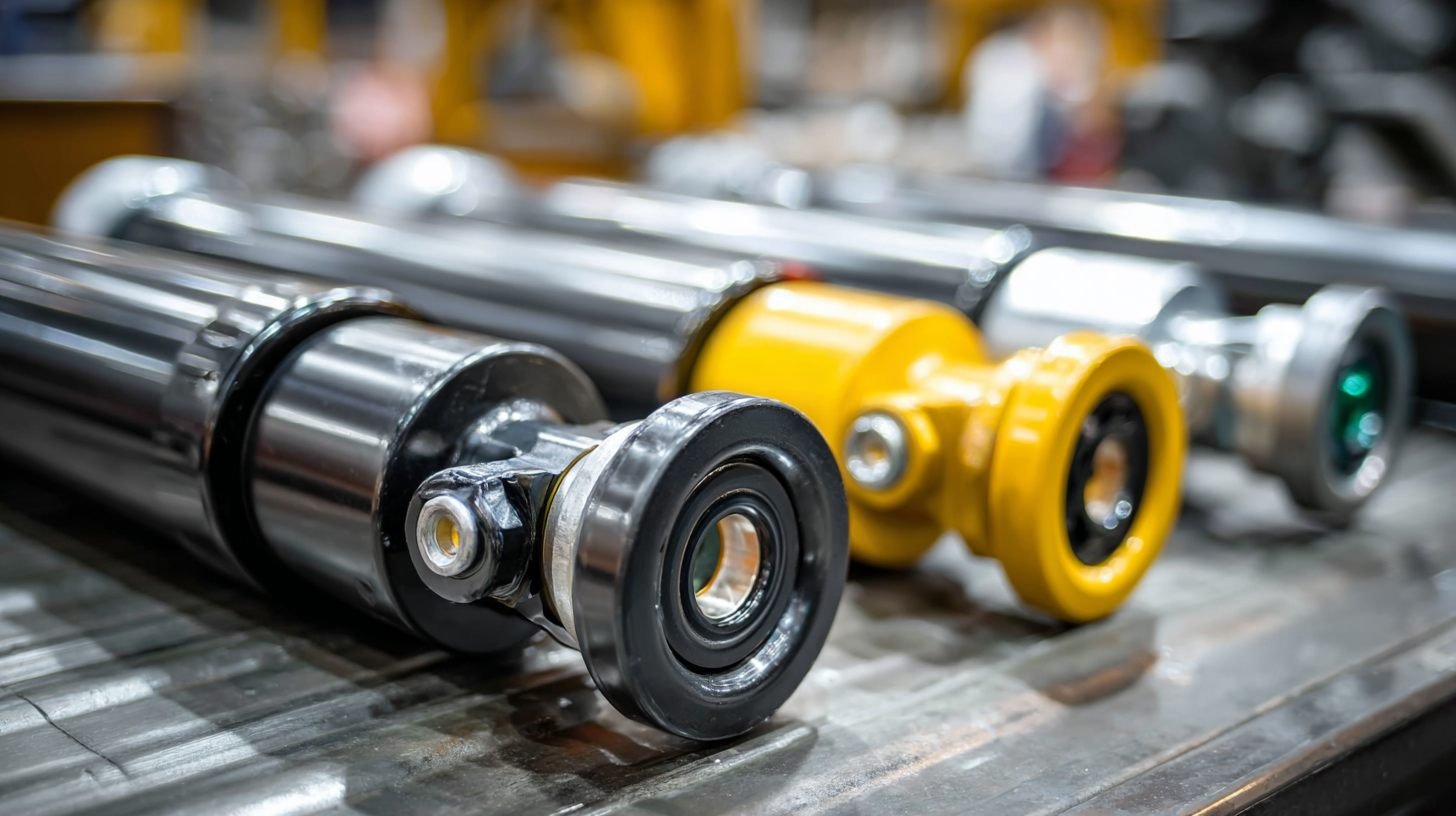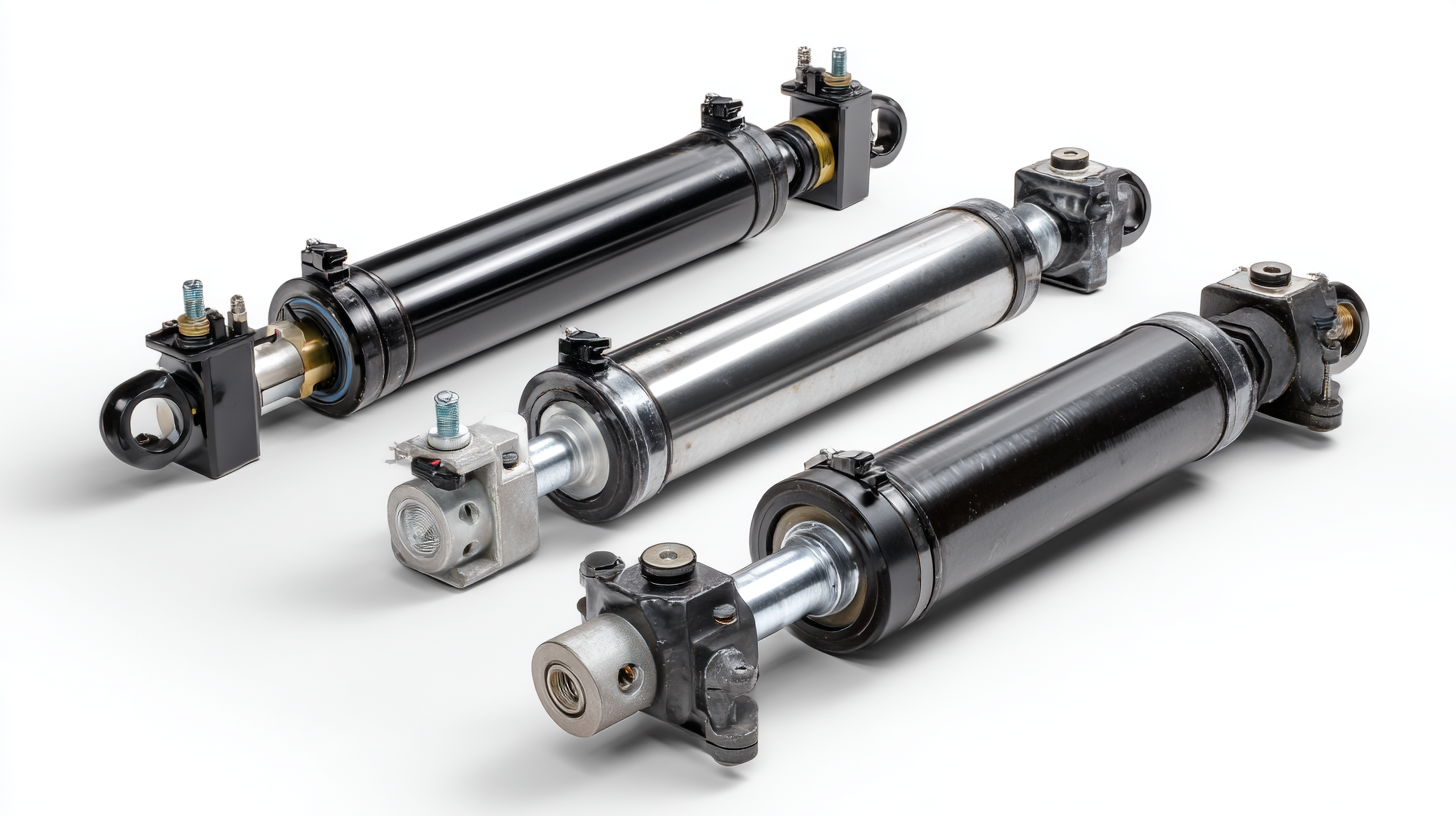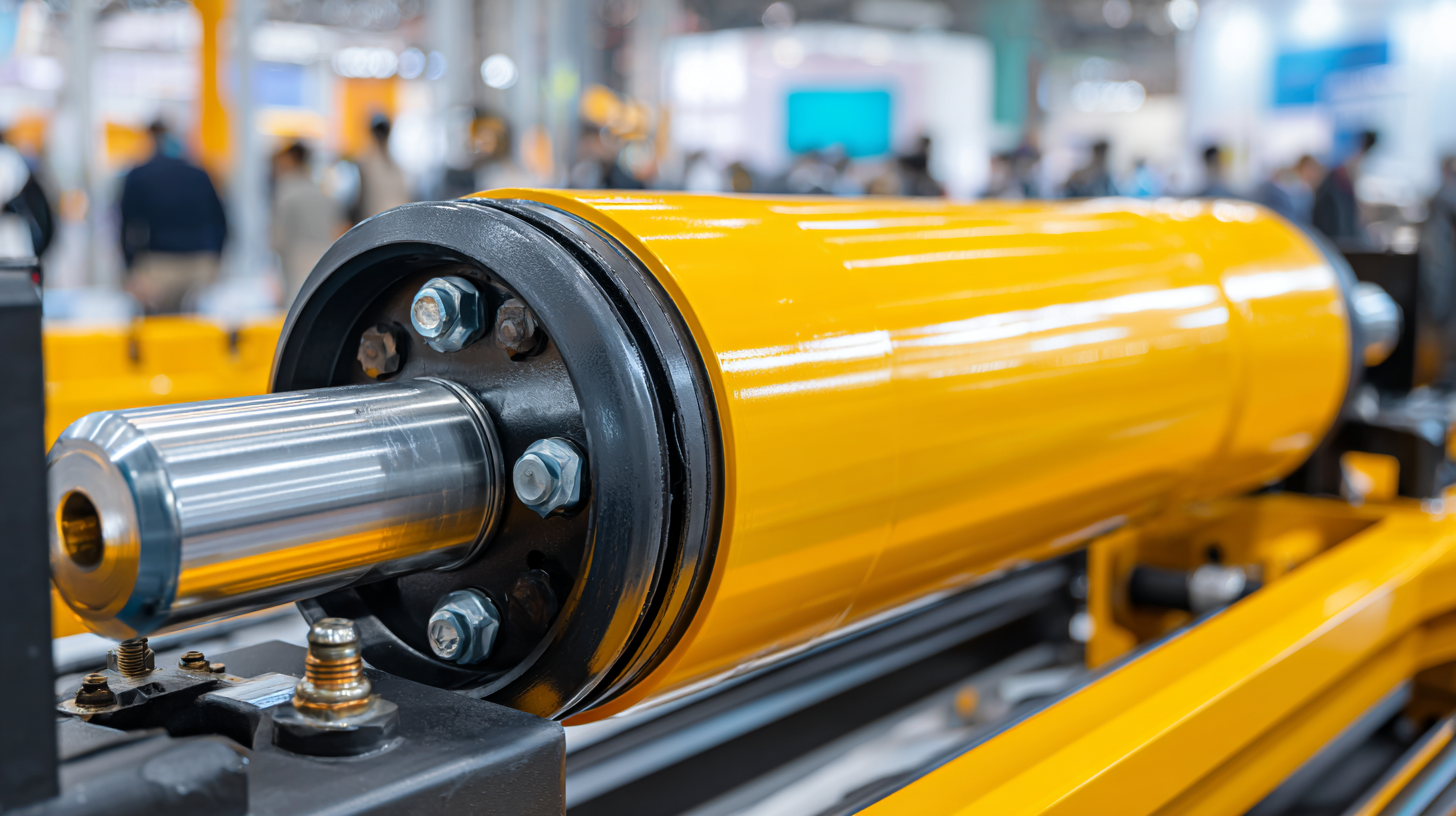As we venture into the innovative landscape of the hydraulic industry, the focus on aftermarket hydraulic cylinders has never been more pronounced. By 2025, advancements in technology and engineering are set to revolutionize the way these essential components are designed, manufactured, and utilized. This blog aims to explore the upcoming innovations in aftermarket hydraulic cylinders, providing insights on how these changes will enhance efficiency, reliability, and sustainability in various applications. From improved materials to cutting-edge manufacturing processes, we will delve into the transformative trends that are shaping the future of the hydraulic industry. Join us as we uncover the strategies and technologies that will define the next generation of aftermarket hydraulic cylinders, ensuring that we are well-equipped to adapt to the challenges and opportunities that lie ahead.

The hydraulic cylinder technology landscape is undergoing dramatic transformations as we approach 2025, with a focus on improving performance across various applications. Innovations in materials and design are making hydraulic cylinders not only more durable but also lighter, which significantly enhances the efficiency of mobile machinery. As industries shift towards greater automation, advancements in hydraulic systems are crucial; they offer improved responsiveness and precision, essential for advanced construction equipment and heavy machinery.
Additionally, the integration of IoT technologies into hydraulic systems fosters smarter operations through real-time monitoring and predictive maintenance. This shift not only minimizes downtime but also optimizes operational workflows. As seen in the latest launches showcased at bauma 2025, the combined efforts of electrification and digitalization are leading to hydraulic systems that are more efficient and environmentally friendly. These trends underscore the importance of innovation in hydraulic cylinders, setting a new standard for the future of mobile machinery and ensuring a significant impact on overall performance and productivity.
| Feature | Current Standard | Expected Development by 2025 | Impact on Performance |
|---|---|---|---|
| Material Technology | Steel & Cast Iron | Advanced Composites & Alloys | Increased strength-to-weight ratio, improved durability |
| Sealing Technology | Traditional Seals | Smart Seals with Self-Lubricating Features | Reduced leakage, enhanced maintenance intervals |
| Control Mechanisms | Mechanical Linkages | Digital Control Systems | Precision control, improved responsiveness |
| Hydraulic Fluids | Mineral Oils | Bio-based Fluids | Reduced environmental impact, improved thermal stability |
| Telematics | Limited Data Collection | Real-time Monitoring & Predictive Maintenance | Enhanced reliability, reduced downtime |
As we look ahead to 2025, the aftermarket for hydraulic cylinders is poised for significant growth, driven by innovations in technology and an increased focus on sustainability. Market projections indicate that the demand for high-performance hydraulic cylinders will rise, particularly within industries such as construction, agriculture, and manufacturing. With advancements in materials and design, these cylinders are expected to offer enhanced durability and efficiency, ultimately leading to lower operational costs for end-users.

Key insights from market analysis suggest that companies investing in smart technologies, such as IoT integration and predictive maintenance, will gain a competitive edge. These innovations are not only aimed at improving performance but also at extending the lifespan of hydraulic systems. Furthermore, the trend towards eco-friendly solutions is likely to shape product development, as consumers seek more sustainable options that comply with environmental regulations. The combination of technological advancements and a commitment to sustainability will define the future of aftermarket hydraulic cylinders, setting the stage for a robust and dynamic market landscape by 2025.
As we venture into the realm of aftermarket hydraulic cylinders, the materials utilized are stepping up to meet the demands of durability and efficiency. Innovations such as advanced composites and high-strength alloys are revolutionizing the manufacturing process. These materials not only reduce weight but also enhance resistance to corrosion and wear, leading to longer service life and lower maintenance costs. Engineers are increasingly focusing on integrating nanomaterials, which provide enhanced properties at a fraction of the weight, making hydraulic systems more robust and reliable.
Moreover, manufacturing techniques like additive manufacturing are enabling the production of complex geometries that were previously unattainable. This allows for designs that optimize fluid flow and reduce energy consumption, significantly improving the overall efficiency of hydraulic cylinders. By harnessing these cutting-edge materials and techniques, manufacturers are not only addressing the performance needs of various industries but also ensuring their products are environmentally sustainable, aligning with global trends towards greener technologies. The future of hydraulic cylinders looks promising, filled with innovations that cater to both functionality and sustainability.
As we venture into the future, the aftermarket hydraulic cylinder industry is on the brink of a technological renaissance. Smart technology is set to revolutionize these essential components, enhancing not only their performance but also the entire user experience. By integrating IoT (Internet of Things) capabilities, hydraulic cylinders will soon be able to communicate real-time data, enabling predictive maintenance and minimizing downtime. These advancements ensure that machinery operates more efficiently and reliably.
Tip: When considering an aftermarket hydraulic cylinder, look for models equipped with smart sensors that monitor pressure, temperature, and overall health. This proactive approach can save time and costs associated with unexpected repairs.
Moreover, the incorporation of machine learning algorithms allows for more sophisticated predictive analytics. By examining usage patterns and performance metrics, manufacturers can design cylinders that better meet the specific needs of various industries, from construction to manufacturing. This level of customization will not only maximize efficiency but also reduce the ecological footprint of hydraulic systems.
Tip: Research vendors who offer data-analytics services alongside their hydraulic cylinders. Utilizing these insights can lead to more informed decisions regarding maintenance schedules and operational practices, ultimately boosting overall productivity.
This chart illustrates the projected growth trends in aftermarket hydraulic cylinders across various sectors by 2025, showcasing the impact of smart technology and innovative solutions.
As we look towards 2025, the hydraulic cylinder manufacturing industry is poised for significant transformations driven by sustainability practices. With global awareness of environmental issues on the rise, manufacturers are increasingly adopting eco-friendly materials and processes. According to a recent report from the International Energy Agency (IEA), integrating sustainable materials could reduce the carbon footprint of hydraulic cylinders by up to 30%. This shift not only addresses environmental concerns but also meets the growing demand for sustainable products in various industries, including construction and automotive.
Moreover, advancements in recycling technologies are expected to play a key role in promoting sustainability within hydraulic cylinder manufacturing. A study by the National Institute of Standards and Technology (NIST) indicates that incorporating recycled materials could enhance efficiency while reducing raw material costs by approximately 15%. As manufacturers embrace circular economy principles, the future of hydraulic cylinders will not only focus on performance and durability but also prioritize the ecological impact, shaping a more responsible industry moving forward.
